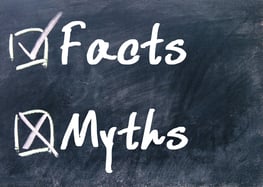 There are a lot of common misconceptions about exotic leather that people may have. These myths about exotic leather could confuse some, and lead them to the wrong conclusions about their exotic leather goods.
There are a lot of common misconceptions about exotic leather that people may have. These myths about exotic leather could confuse some, and lead them to the wrong conclusions about their exotic leather goods.
Today, we’ll cover some of the most prolific exotic leather myths, and the truths behind them:
Myth #1: All Exotic Leather Harvesting is Cruel
There is a belief among some that the exotic leather industry is universally inhumane to animals.
This couldn’t be farther from the truth.
The trade of animal skins is heavily regulated across the globe. Animal farms and hunters have to follow strict guidelines about how animals can be caught, treated, raised and put down.
Even if there weren’t laws against the inhumane treatment of animals, there’s one truth that all the best farms know: Top-quality skins don’t come from abused animals. To make a top-quality, grade I skin, a farm has to:
- Raise animals in a safe environment—Harm to the animal damages the hide and reduces its quality.
- Closely monitor and control animal diets—Animals need to be well-fed to promote healthy growth and maximum-quality hides.
- Humanely harvest animals—Messy, inhumane methods of euthanizing animals can damage the hide.
Ultimately, following the principles of animal welfare promotes the production of higher-quality skins, which makes animal farms more profitable. Animal cruelty is counter-productive and pointless for farms.
Myth #2: Exotic Leather Harvesting Contributes to the Extinction of Species
 As mentioned before, tanneries have to follow very strict international laws regarding the skins they can process and trade. Endangered species are prohibited for trade and protected species are closely governed on an international, national and state level.
As mentioned before, tanneries have to follow very strict international laws regarding the skins they can process and trade. Endangered species are prohibited for trade and protected species are closely governed on an international, national and state level.
Actually, the practice of farming exotic animals for their hides has helped to contribute to the resurgence of some animal species.
For example, consider the American alligator. Prior to 1987, this animal was once considered at risk of extinction thanks to human encroachment on the alligator’s natural habitat. Today, a combination of conservation efforts and alligator farming have seen the American alligator removed from the endangered list and back onto the “least concern” list.
As noted by the Florida Alligator Marketing and Education site, “Alligator farming helps take pressure off the wild alligator population while meeting the high demand for alligator products. Some Florida Alligator farms maintain adult breeding stock that produce all the eggs needed for the farming operation.”
By taking pressure off of the wild population and ensuring the safe growth of eggs, alligator farms have actually worked wonders to keep alligators off the endangered species list while meeting the needs of the exotic leather industry.
Myth #3: Exotic Leather Isn’t That Different from Cow Leather
Some who have never worked with any kind of exotic leather might assume that there is little to no difference between common cow hide and alligator skin, ostrich skin, or python skin. In truth, there is a world of difference between many of the exotic leather hides on the market and cow hide, just like there’s a massive difference between fine silks and coarse wool.
The differences between cattle hide and exotic leathers are numerous.
Some exotic leathers, such as stingray leather, are significantly tougher than cow hide, making them much better for heavy-duty uses such as motorcycle bags. Python skins have colors and patterns not found on cowhide, giving them a much more distinctive look.
The rigidity of caiman crocodile hides are perfect for hard-case style handbags and other structured products.
Many of these skins have unique properties to them that cowhide could never hope to match.
Want to know more about exotic leather and how to use it? Contact Pan American Leathers today!



